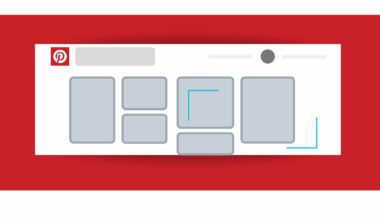Storytelling Tips for Increasing LinkedIn Audience Interaction
Storytelling on LinkedIn is essential for engaging your audience effectively. By crafting compelling stories, you can better connect with your followers and encourage interaction. Start by identifying your audience’s interests and challenges. Reflect on your personal experiences and insights relevant to these topics. This alignment makes your content more relatable and encourages others to engage actively. Use a mix of visuals, such as images or videos, to enhance your stories. This addition can significantly boost engagement and strengthen your message. Ensure that your narratives have a clear structure: a beginning, middle, and end. The introduction should grab attention, while the body provides context and insights. Lastly, the conclusion should inspire action. Invite your audience to comment, ask questions, or share their experiences. This call to action fosters a sense of community and encourages more engaging exchanges. Regularly posting storytelling content can help establish your voice. Focus on authentic messaging that reflects your values and mission. This way, your audience is more likely to relate and interact with your posts consistently, enhancing overall engagement.
Another storytelling approach centers on utilizing case studies and client success stories. By sharing real-life examples, you provide tangible proof of your expertise and value proposition. This aids in building trust and credibility, essential components of audience interaction. Highlight the journey from problem identification to solution implementation. This narrative arc captivates readers and encourages them to engage. Keep in mind to maintain confidentiality and prioritize the consent of those involved. Sharing such stories not only boosts engagement but also establishes your authority in your niche, leading to increased visibility. Utilize compelling headlines that pique interest. For example, instead of “A Client’s Journey,” try “How We Helped Client X Achieve Y in Just Z Months.” Headlines with a specific promise can lead to higher click-through rates, ultimately driving more interaction. Don’t shy away from expressing vulnerability in your stories. Vulnerability humanizes your brand, allowing your audience to connect with you on a personal level. Share lessons learned from failures or challenges. This transparency can resonate deeply, prompting your audience to engage through comments and shares.
Consider integrating storytelling into your LinkedIn articles. Long-form content allows you to delve deeper into topics and share nuanced stories. Begin with a captivating anecdote or a powerful quote that reflects your core message. This sets the tone for your article and draws readers in. Utilize subheadings to break down the content into manageable sections. This improves readability and keeps your audience engaged throughout. Incorporate questions throughout your narrative to prompt reader thought and interaction. This technique not only makes the reader feel involved but also invites them to share their insights in the comments. Remember to include relevant hashtags that amplify your content’s reach. Hashtags categorize your articles, making it easier for interested readers to find and engage with your content. Respond to comments promptly; this fosters a sense of community and shows that you value your audience’s input. Acknowledging feedback or questions can lead to richer conversations. Additionally, using LinkedIn polls related to your storytelling can broaden your reach and drive engagement as well. Polls encourage immediate responses and add an interactive element to your storytelling.
Embracing Visual Storytelling
Visual storytelling is an integral part of effectively communicating your narrative on LinkedIn. Incorporating infographics, images, and videos within your posts helps to capture attention quickly. Visual elements can convey complex ideas more efficiently than text alone, making your messages clearer and more impactful. Additionally, videos have been known to have higher engagement rates compared to static content. Create video snippets summarizing your stories and encouraging viewers to engage in the comments or share their thoughts. Utilize captivating visuals that align with your brand identity to reinforce your message. Consistency in visual themes fosters brand recognition and encourages followers to anticipate your posts. Consider utilizing platforms like Canva for designing graphics or supporting visual stories. Including relevant captions with images can provide context and make your posts more informative. It is also essential to keep your visuals authentic and relatable; candid photos or behind-the-scenes content can resonate with your audience more than perfectly polished images. Encourage users to share their similar experiences related to your visuals. This can generate more interaction and create a collaborative community around your content.
Data storytelling represents another powerful technique to resonate with your audience on LinkedIn. Presenting data points or industry statistics within your narratives can add credibility and enhance engagement. For instance, if you share an insight about market trends, back it up with relevant data graphics. This combination of storytelling and data aids in convincing your audience. Important statistics can highlight relevant issues and attract the reader’s attention. Use statistics from reputable sources to reinforce your position. Including expert quotes or testimonials within your narrative can further strengthen your story and provide additional layers of authenticity. Make sure to format your data clearly. Consider utilizing bullet points or numbered lists to present statistics neatly. This way, your key messages remain visually appealing while being easy to digest. Invite discussion by asking your audience for their thoughts on the data presented. This prompts your followers to engage meaningfully, enhancing their interaction with your posts. Employing data storytelling not only informs but also encourages your audience to participate in the discussion surrounding the insights provided.
Another effective strategy involves using storytelling to highlight your professional journey. Share your challenges, learning experiences, and successes. This transparency cultivates a deeper connection with your audience, encouraging them to engage with your journey. Describe significant turning points in your career and the lessons learned. Integrate relatable aspects into your narrative that others may experience. This encourages empathy and boosts interaction. Additionally, express gratitude towards mentors or pivotal opportunities within your story. Acknowledging contributions from others can resonate with both existing and new followers, fostering a collaborative atmosphere on LinkedIn. Utilize images from significant events or milestones in your career. This adds a personal touch to your story, allowing your audience to visualize your journey. Encourage your followers to reflect on their career paths by prompting them to comment on their experiences. This promotes meaningful exchanges in the comments section, encouraging others to share thoughts or advice. Your professional storytelling can inspire, motivate, and resonate with your audience while enhancing their overall interaction, ultimately creating a more engaged community around your brand.
In conclusion, implementing powerful storytelling techniques is vital for enhancing audience interaction on LinkedIn. By focusing on authenticity, relatability, and engagement, you can significantly improve your ability to connect with followers. Maintain a consistent narrative style that reflects your brand’s voice while being open to diverse topics. Your audience seeks connection, inspiration, and insight; providing these elements will encourage regular interaction. Use various storytelling methods, including visuals, data, and personal anecdotes to enrich your content. Don’t forget the importance of responding to audience engagement promptly; this shows respect and appreciation for their contributions. As you continue to refine your storytelling approach, monitor engagement metrics to assess what resonates best with your audience. Be open to experimenting with different formats and ideas to consistently keep your content fresh. Remember to encourage sharing and discussion to extend your reach. Lastly, keep nurturing the relationships you build through storytelling, creating a thriving community around your professional experiences. Over time, your dedication to storytelling will not only enhance interaction but will also further establish your brand as a thought leader in your industry.


